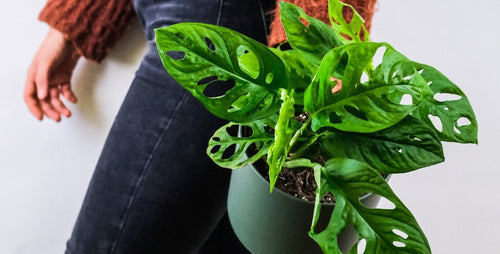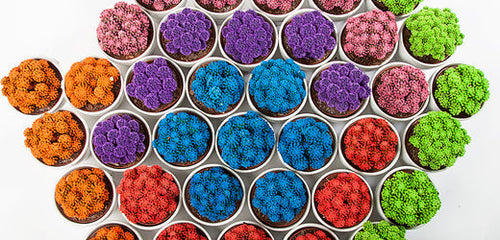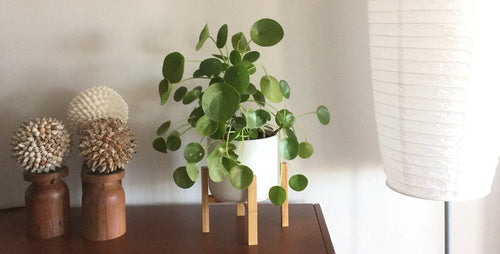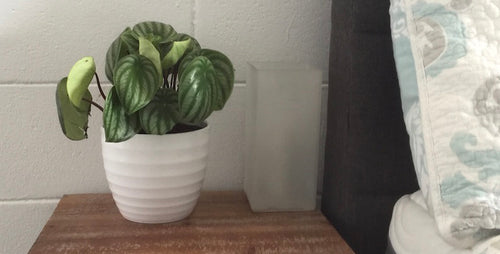The genus Monstera is one of the hottest groups of plants in the houseplant world. It’s no wonder why these stunning plants have captured our hearts with their textural foliage and easy-growing nature.
Thanks to their popularity, there’s an increasing number of Monstera varieties becoming more commonly available. Each has its own charm, making it a lovely addition to your home or office. We’ll help you pick the best Monstera varieties for your space.
Light
Bright Light. Good news: If you have a bright spot for it, any of these Monstera varieties can be a good choice for you because they all appreciate bright conditions. The ideal spot is within about 3 feet or so of a large, unobstructed south-, east-, or west-facing window. In most areas, they can take some direct sun through a window on their leaves if they acclimate.
Low Light. If you have a low-light spot, the best Monstera variety for you is going to be M. deliciosa—it’s best at tolerating lower-light conditions. But it will do better if you can periodically rotate it to a brighter spot in your home.
Water
All the Monstera varieties would rather be too dry than too wet—so keep an eye on them if you tend to overwater. (Or look for them in our self-watering system, which, while it keeps the potting mix moist, doesn’t ever keep it too wet!)
If you don’t get to watering your houseplants often enough and need varieties that tolerate drought better, look for thicker-leaf varieties like Monstera Peru and M. deliciosa.
Humidity
Because they’re native to tropical rainforests of Central and South America, most Monstera varieties prefer above-average household humidity levels. But they do okay in average household humidity—40 to 60 percent—as long as they’re watered appropriately, aren’t subjected to hot or cold drafts, etc.
But if your home experiences below-average relative humidity levels, you should find M. deliciosa and Monstera Peru are your best bets. Thinner-leaf varieties like Monstera Esqueleto and M. adansonii can suffer.
Temperature
Our Monstera varieties all do well in average household temperatures (65F to 85F or so) and can do much warmer conditions. So unless you keep your house especially cool, temperature shouldn’t affect your choice in variety.
Size
You’ll find all our Monstera varieties are pretty fast growers and can get really large—all can easily climb more than 8 feet tall if you give them good conditions. But some have larger leaves than others.
Small Spaces. If you don’t have room for a giant Monstera with leaves that can get more than a foot long, Monstera Peru may be your best bet as its leaves don’t grow huge. Monstera Cobra is another variety with more petite leaves.
Big Spaces. If you have lots of room and want a serious statement plant, M. deliciosa, Monstera Thai Constellation, and Esqueleto all feature huge leaves. If you give them good care and have a little patience, Monstera adansonii, siltepecana, and subpinnata can also eventually show off large leaves.
Fenestration
M. deliciosa’s iconic look comes from the slits and fenestrations (holes) in the leaf. Each species looks a little different as it matures, though.
No slits or fenestration. If you like the clean look without cuts or holes, Monstera Cobra and Monstera Peru are your best bets.
Fenestration, but no slits. If you like a leaf with holes, but you don’t want the cuts in the sides, look at Monstera adansonii, M. siltepecana, and Esqueleto.
Slits, but no fenestration. Get a palm-like look from Monstera subpinnata, whose leaves almost look like palm fronds.
Slits and fenestration. M. deliciosa and Thai Constellation give you both, creating the traditional look.
Variegation
Variegation—streaks and splashes of other colors in the leaf—adds sparkle and interest to your plant. But it also usually makes the plant weaker. This is particularly true for varieties variegated in white, cream, or yellow. This is because the variegated areas don’t have chlorophyll, and the less chlorophyll a plant has, the less energy it has to grow. (Variegated Monstera also tend to be slower-growing than their non-variegated cousins.)
Strong, non-variegated plants. M. deliciosa, M. adansonii, Esqueleto, Peru, and M. subpinnata all feature lush green leaves.
Variegated beauties. If you enjoy some good variegation, go for Cobra or Thai Constellation, which both feature leaves marked in creamy white. Monstera siltepecana is another lovely choice, with leaves marked in silver.
Note: There are many variegated forms of Monstera, but we don’t currently grow them all (yet!).
Written by Justin Hancock

















